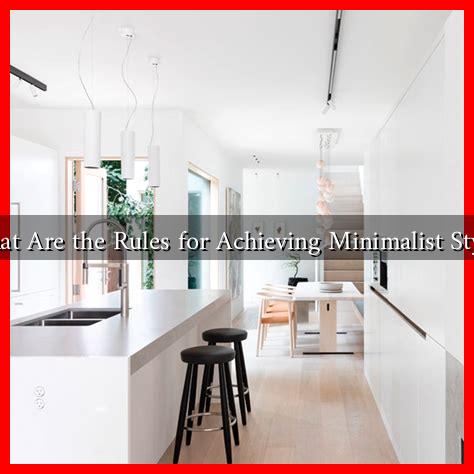-
Table of Contents
What Are the Rules for Achieving Minimalist Style?
Minimalism is more than just a design aesthetic; it’s a lifestyle choice that emphasizes simplicity, functionality, and intentionality. Whether you’re looking to declutter your home, streamline your wardrobe, or create a more peaceful workspace, understanding the rules of minimalist style can help you achieve a serene and organized environment. In this article, we will explore the fundamental principles of minimalism and provide practical tips for incorporating this style into your life.
Understanding Minimalism
At its core, minimalism is about stripping away the unnecessary to focus on what truly matters. This philosophy can be applied to various aspects of life, including home decor, fashion, and even digital spaces. According to a study by the Statista Research Department, the number of articles related to minimalism has surged in recent years, indicating a growing interest in this lifestyle.
Key Rules for Achieving Minimalist Style
To successfully adopt a minimalist style, consider the following rules:
- Embrace Simplicity: Choose designs and items that are simple and functional. Avoid overly ornate or complicated pieces that can clutter your space.
- Prioritize Quality Over Quantity: Invest in fewer, high-quality items that will last longer and serve multiple purposes. This approach not only reduces clutter but also enhances your overall aesthetic.
- Limit Your Color Palette: Stick to a neutral color scheme with occasional pops of color. This creates a cohesive look and makes it easier to mix and match items.
- Declutter Regularly: Make it a habit to assess your belongings and remove items that no longer serve a purpose or bring you joy. The “one in, one out” rule can be particularly effective.
- Focus on Functionality: Choose furniture and decor that serve a purpose. Multi-functional pieces, such as a coffee table with storage, can help maintain a clean and organized space.
- Create Open Spaces: Allow for negative space in your design. This not only makes a room feel larger but also draws attention to the items you choose to keep.
Examples of Minimalist Style in Action
To illustrate the principles of minimalist style, let’s look at a few examples:
- Home Decor: A minimalist living room might feature a simple sofa, a single piece of art on the wall, and a coffee table with clean lines. The focus is on comfort and functionality without unnecessary embellishments.
- Fashion: A minimalist wardrobe often consists of versatile pieces that can be mixed and matched. Think of a capsule wardrobe with neutral tops, tailored pants, and a classic coat.
- Digital Minimalism: In the digital realm, minimalism can mean decluttering your desktop, unsubscribing from unnecessary emails, and limiting social media usage to reduce distractions.
Case Studies: Successful Minimalist Transformations
Many individuals and families have successfully adopted minimalist lifestyles, leading to significant improvements in their quality of life. For instance, the popular blog The Minimalists, run by Joshua Fields Millburn and Ryan Nicodemus, chronicles their journey from corporate life to minimalism. They emphasize how reducing physical possessions can lead to greater emotional freedom and clarity.
Another notable example is the Tiny House movement, where individuals choose to live in small, efficient homes that prioritize functionality and simplicity. According to a survey by the Tiny House Community, 68% of tiny house owners report feeling happier since downsizing.
Conclusion
Achieving a minimalist style is not just about reducing clutter; it’s about creating a space that reflects your values and priorities. By embracing simplicity, prioritizing quality, and focusing on functionality, you can cultivate an environment that promotes peace and clarity. Remember, minimalism is a personal journey, and there are no strict rules—only guidelines to help you find what works best for you. As you embark on this journey, keep in mind that the ultimate goal is to create a life filled with intention and purpose.




